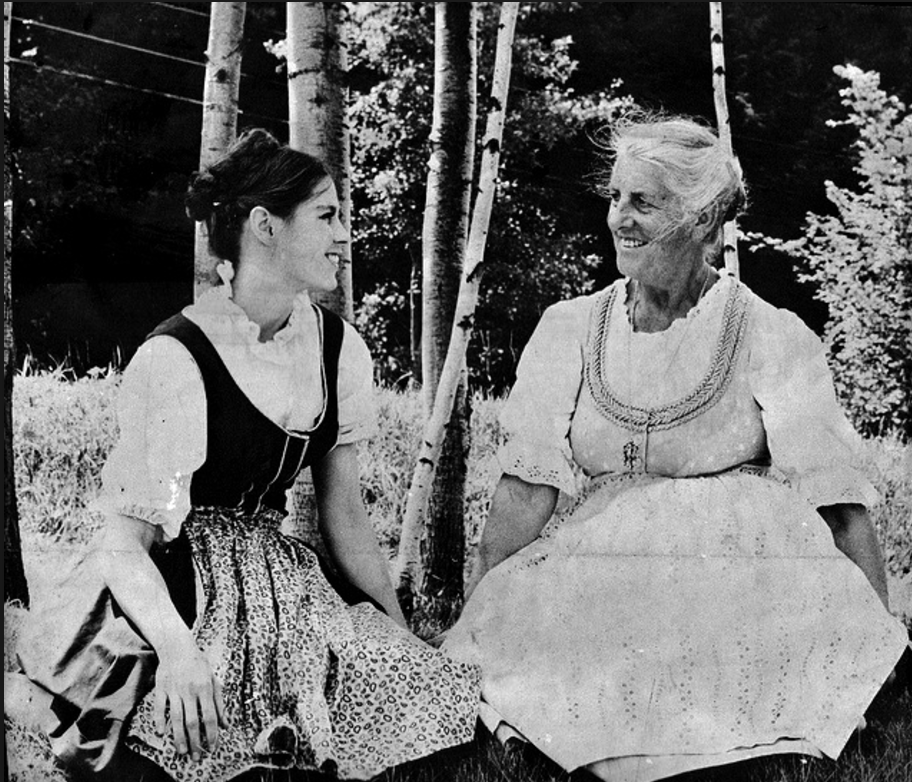Or Maria von Trapp’s Guidonian Manifesto
By Christine Boone, PhD

“I can sing the melody; I just can’t put the solfege syllables with it!”
I hear some version of this from students every semester, occasionally accompanied by an eye roll.
“Why do we have to put these random syllables with the notes?”
“We already have to worry about pitch, rhythm, dynamics, phrasing…isn’t it just adding one more aspect (an unnecessary one, at that!) to the music?”
Sound familiar to any other teachers?
You’ve got a friend in mi (or me)
Take a look at the following melody:

Sing it through, without using solfege syllables. Easy, right? Now try it with solfege. It doesn’t make this melody much easier, does it?
Now try this one:

Are you getting the leaps accurately without using solfege? If so, I’m willing to bet that you’ve studied solfege, and are internalizing the syllables without actually singing them!
Or you have perfect pitch.
Or you’re just too awesome.
While solfege may not be nearly as useful in melodies primarily using stepwise motion (although it can help you find your place if you get lost in an endless Handel melisma), throw in a leap or two or six and you’ll find, once comfortable, that solfege is a welcome and necessary ally. An inexperienced sight-singer would see the C leaping up to the A in the previous example and would likely blindly guess at where the upper note was. A more experienced sight-singer would quickly see that note as “la,” auralize it (hear it in her head), and finally, sing it accurately.
OK, OK, but what about intervals?
Still, why focus on singing syllables when we can focus on hearing intervals? (We’ve all at some point associated familiar musical fragments with specific intervals — a perfect fourth sounds like “Here Comes the Bride,” right? Can’t I just memorize a song for every interval, and use those intervallic shortcuts to sight-sing? Unfortunately, a perfect fourth doesn’t always sound like “Here Comes the Bride.” Check this one out:

Context means everything when it comes to sight-singing. The perfect fourth at the beginning of “Here Comes the Bride” is sol to do, which means, to the experienced sight-singer, that you’re moving from a very stable note to the most stable note in that key. You’re probably inferring dominant to tonic harmonic motion in your head, which means you’re hearing a sense of resolution as you leap to do. In the previous melody, however, the perfect fourth is from la to re: A relatively stable tonic substitute to an unstable, dominant-supported note that demands further resolution (down to do).
The asymmetrical nature of the diatonic scale means that we don’t always perceive two different pairs of notes with identical intervallic distances the same way. It leads to the push-and-pull/tension-and-release of the tonal system. The tritone in the major scale — fa to ti — is inherently unstable, and its resolution pulls us toward tonic. Tonic, therefore, is felt with more weight, more stability. When you sing do, you should be thinking of it as the “home base” of a key.
Sing through these next two examples and listen to how different a minor third sounds in different diatonic contexts:


Amazing, right? But with solfege, we have the ability to sight-sing these different contexts. Once you memorize the seven diatonic syllables and their chromatic alterations and, more importantly, their function within the tonal system; it’s like having a super power! You can literally sing ANYTHING without having to hear it first!
So, stick with it, students — and listen to your professors. We’re trying to give you superpowers!
You can follow Christine Boone on Twitter at @guidonianfan.